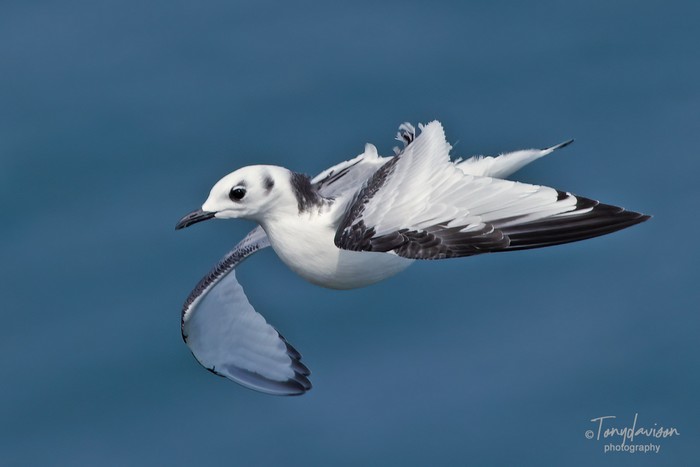Climate, Plastic, Prey Loss: Seabirds Face a Perfect Storm

The 2024 Northern Ireland Seabird Report, compiled by the British Trust for Ornithology (BTO) in collaboration with a wide network of volunteers and conservation bodies, offers a detailed snapshot of seabird breeding trends across the region. With data drawn from 2023 and 2024, the report underscores a complex blend of encouraging recoveries and worrying declines within key species.
Among the species of greatest concern are the Kittiwake, Puffin, and Razorbill, all listed as vulnerable or endangered on the IUCN Red List and Red-listed under the Birds of Conservation Concern in Ireland (BoCCI). Meanwhile, Fulmars and Manx Shearwaters — long-time residents of Northern Ireland’s cliffs and islands — exhibit fluctuating trends that mirror wider environmental changes.
Fulmars Fall While Puffins Plunge
Once widespread, Fulmar numbers in Northern Ireland have suffered a sharp decline. The species has seen a 57% drop in breeding numbers since the 2000 Seabird Census, with only 2,566 apparently occupied sites (AOS) recorded between 2015–2021. Productivity also remains low, with 2024 yielding just 0.17 chicks per pair, despite a small rise from the previous year. The causes are multifaceted — likely involving reduced fish discards, bycatch, plastic ingestion, and climate change.
For Puffins, the situation is even more dire. Now classified as endangered, they face mounting threats from warming seas and diminishing sandeel stocks. Though small colonies persist in Northern Ireland, notably on Rathlin Island, comprehensive monitoring remains difficult. Their numbers, as with other auk species, are thought to be in significant decline.
Gulls and Terns: Mixed Fortunes
Gull species display wide-ranging trends. The Great Black-backed Gull, for instance, is now Red-listed in the UK following sharp population declines in Scotland. Yet, Northern Ireland has seen a remarkable 507% recovery in breeding numbers since 2000, suggesting localised resilience. Conversely, species such as the Herring Gull and Common Gull have slipped into more concerning territory in both the UK and Irish contexts.
Among the terns, the Roseate Tern — Europe’s rarest — continues to breed in low numbers in Northern Ireland. The colony at Rockabill in Dublin remains its stronghold, but observers note its tenuous status north of the border. Arctic and Common Terns, while still present, are also now Red-listed in the UK due to broad declines.
Manx Shearwater: Ghosts in the Cliffs
The elusive Manx Shearwater, a bird of moonlit burrows and offshore journeys, breeds in just one known Northern Irish location: the Copeland Islands. A 2021 census is pending publication, but earlier surveys placed their population at roughly 5,000 burrows. On Rathlin Island, anecdotal evidence from 2024 — including nighttime calls and landings — hints at possible recolonisation. However, difficult terrain and the species’ cryptic habits make firm conclusions elusive.
Rising Role of Volunteers and New Technologies
Volunteers continue to be the cornerstone of seabird monitoring in Northern Ireland. From dawn counts of Black Guillemots to drone surveys over remote islets, these citizen scientists offer vital data that informs regional and international conservation efforts. New approaches, including camera trapping and infrared monitoring, are also being trialled to fill gaps in understanding breeding success and survival.
However, many critical sites remain unsurveyed due to logistical challenges. Islands such as Big Copeland, The Gobbins, and Sheep Island are cited as monitoring priorities, alongside potential breeding sites for elusive species like Storm Petrel. Without sustained access and resources, data on key colonies risk slipping through the cracks.
Looking Ahead: Strategy in Motion
To guide future action, a Seabird Conservation Strategy and Action Plan for Northern Ireland is in development, aiming for publication in 2025. This ambitious framework will set out priorities for monitoring, threat assessment, and habitat management. With seabirds acting as indicators of marine ecosystem health, their fate is tightly linked to broader environmental wellbeing.
As climate pressures mount and conservation obligations grow more urgent, Northern Ireland’s seabird report reminds us of both the fragility and tenacity of these coastal sentinels. Whether nesting on storm-battered cliffs or diving for dwindling fish shoals, seabirds are sounding a call — one we cannot afford to ignore.
3 Apr 2025
Share this story







